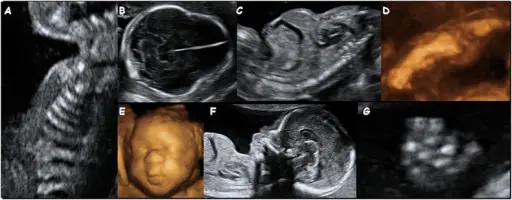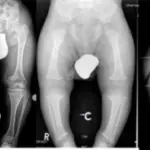Thanatophoric dysplasia is a severe autosomal dominant skeletal disorder characterized by a disproportionately small ribcage, extremely short limbs, and folds of extra skin on the arms and legs.
What is the Pathology of Thanatophoric Dysplasia?
The pathology of thanatophoric dysplasia is:
-Etiology: The cause of thanatophoric dysplasia is a missense mutation in fibroblast growth factor receptor-3.
-Genes involved: FGFR-3.
-Pathogenesis: The sequence of events that lead to thanatophoric dysplasia is the point mutations within FGFR3 which signal negative signals to the cartilage cells.
-Histology: The histology associated with thanatophoric dysplasia shows diminished proliferation of chondrocytes and poor columnization of the zone of proliferation.
How does Thanatophoric Dysplasia Present?
Patients with thanatophoric dysplasia typically are both males and females in equal proportion. The symptoms, features, and clinical findings associated with thanatophoric dysplasia include disproportionately short arms and legs with extra folds of skin. Other signs of the disorder include a narrow chest, small ribs, underdeveloped lungs, and an enlarged head with a large forehead and wide-spaced eyes.
How is Thanatophoric Dysplasia Diagnosed?
Thanatophoric dysplasia is diagnosed by prenatal ultrasound examination or low dose fetal CT.
How is Thanatophoric Dysplasia Treated?
Thanatophoric dysplasia is treated by inpatient care, as there is no treatment available.
What is the Prognosis of Thanatophoric Dysplasia?
The prognosis of thanatophoric dysplasia is very poor. It is extremely and almost always lethal without aggressive treatment.



